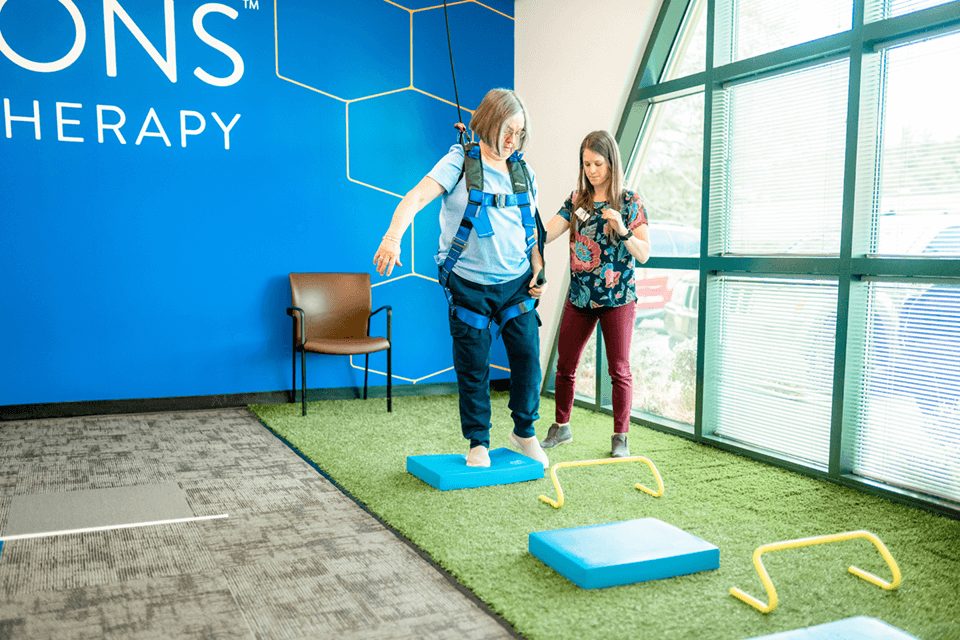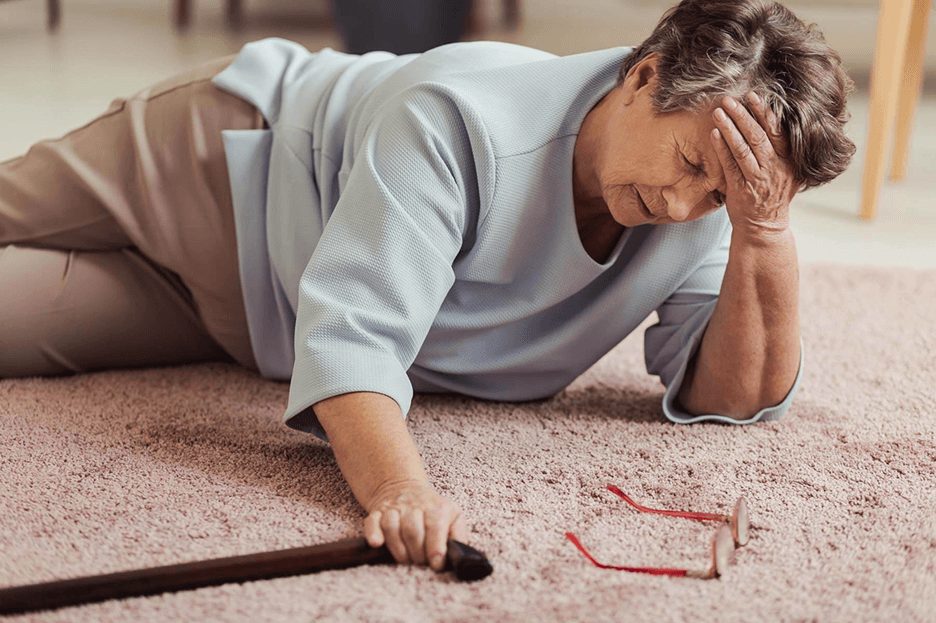5 Common Gait Abnormalities Among the Elderly

A gait abnormality, also known as abnormal gait, refers to a deviation from the typical manner of walking. It can be caused by various factors, including neurological or musculoskeletal disorders, pain, weakness, injuries, or imbalances.
Gait abnormalities can affect your patient’s timing, coordination, and rhythm of walking. This may result in an unsteady or unstable gait, limping, foot-dragging, shuffling, or other similar movements. Depending on the underlying cause, gait abnormalities can be temporary or permanent and may require medical evaluation and treatment.
Why are Gait Abnormalities a Problem?
Decreased muscle strength, joint stiffness, balance problems, and neurological conditions can cause elderly patients to experience troubling gait abnormalities. Gait abnormalities can be a problem for several reasons, including:
- Increased risk of falls: falls can lead to serious injuries such as fractures, head injuries, and death.
- Reduced mobility and independence: gait abnormalities can make it difficult to move around, reducing an individual’s independence and quality of life.
- Pain and discomfort: certain gait patterns, like limping or shuffling, can cause discomfort in the affected joints and muscles.
- Increased energy expenditure: abnormal gait patterns may require more energy to walk, which may lead to fatigue and reduced endurance.
- Increased risk of other health issues: some gait abnormalities may lead to less exercise for the individual, resulting in increased health problems for the individual
What are the 5 Most Common Gait Abnormalities Among the Elderly?
The five most common gait abnormalities among the elderly are:
1. Shuffling Gait
Shuffling gait is a type of abnormal gait pattern in which the person takes small, shuffling steps while walking. It is characterized by:
- A stooped posture
- Flexed trunk
- Reduced arm swing
Your patient may have difficulty initiating movement and may seem frozen in place at times.
Shuffling gait is most commonly associated with Parkinson’s disease, a neurological disorder that affects movement and coordination. In Parkinson’s disease, the shuffling gait is due to rigidity and bradykinesia (slowness of movement) caused by the degeneration of dopamine-producing neurons in the brain.
Other conditions that can cause shuffling gait are:
- Multiple system atrophy
- Progressive supranuclear palsy and
- Some types of dementia
Treatment for shuffling gait depends on the underlying cause. It may include medications, physical therapy, and other interventions to improve mobility and balance.
2. Wide-based Gait
A wide-based gait is an abnormal gait pattern in which the patient has a wider stance than normal while walking. It is characterized by:
- A broad-based, unsteady gait pattern
- Swaying from side to side
- Difficulty maintaining balance
Wide-based gait can be caused by a variety of conditions, including:
- Neurological disorders such as stroke, neuropathy, Parkinson’s disease, and cerebellar ataxia
- Musculoskeletal conditions like arthritis or hip fractures
Patients often use a wide-based gait as compensation for balance problems because it increases the patient’s stability by widening their base of support.
Physical therapy, medications, or surgical interventions may be treatment options for patients that suffer from a wide-based gait pattern.
3. Antalgic Gait
Does your patient limp or favor one leg while walking to reduce pain? They may be suffering from antalgic gait. Antalgic gait is characterized by:
- A shortened stance phase on the affected leg
- A shortened stride length and a faster swing phase on the other leg
- Use of an assistive device to reduce weight bearing on the affected leg
A variety of conditions can cause an antalgic gait pattern, including:
- Arthritis
- Bursitis
- Hip fractures
- Muscle strains
Antalgic gait may be a sign of an underlying health problem that requires evaluation and treatment. Treatment for antalgic gait may include physical therapy, pain management, or surgery to address the underlying condition.
4. Trendelenburg Gait
Trendelenburg gait may cause excessive hip drop and lateral sway of the trunk while walking. It is characterized by:
- Unsteady, waddling gait pattern
- The patient may appear to be leaning to one side while walking
Trendelenburg gait patterns may be caused by a variety of conditions, such as:
- Hip arthritis
- Hip dysplasia
- Nerve damage
Treatment for Trendelenburg gait may include physical therapy, strengthening exercises, or surgical interventions to address the underlying condition.
5. Ataxic Gait
If your patient walks unsteadily with poor coordination and balance and experiences tremors or involuntary movements while walking, they may have an ataxic gait pattern. Ataxic gait is characterized by:
- A wide base of support
- Irregular step length
- A tendency to stumble or fall
Ataxic gait can be caused by the following conditions:
- Cerebellar ataxia
- Multiple sclerosis
- Alcoholism
- Head Injuries
- Side effects of certain medications
Ataxic gait is typically caused by damage to the cerebellum, which is the part of the brain responsible for coordination and balance. Treatment for ataxic gait includes physical therapy, occupational therapy, or medication to manage symptoms.
Can Physical Therapy Help Gait Abnormalities?

Yes, physical therapy can be very effective in improving gait abnormalities. Physical therapists are trained to identify underlying causes of gait abnormalities. They can develop personalized treatment plans for their patients to address the specific needs of the individual.
Physical therapy interventions for gait abnormalities may include:
- Strengthening exercises to improve muscle strength and coordination
- Stretching exercises to improve range of motion and flexibility
- Balance training to improve stability and reduce the risk of falls
- Gait training to improve walking mechanics
- Assistive devices to improve stability and reduce the risk of falls
- Pain management techniques to reduce discomfort
Physical therapy can allow your patients to improve their gait, reduce pain and discomfort, increase mobility and independence, and reduce the risk of falls associated with gait abnormalities.
How Can I Reduce the Patient’s Fear of Falling During Physical Therapy?

The fear of falling is a very common concern, especially among the elderly. Reduce the chance of a patient falling by following these tips:
- Communicate with your patient: develop a plan for your patient if they have a fear of falling. Modify their exercises to keep the patient safe from falling at all times.
- Use assistive devices: Using assistive devices such as the Solo-Step safety overhead track and harness system can keep your patients more stable and confident during physical therapy.
- Practice balance exercises: Practice exercises with your patients in order to teach them exercises that improve balance and coordination.
- Take it slow: start with simple exercises and gradually increase the difficulty level as your patient gains strength and confidence.
- Recommend appropriate footwear: Your patient should be wearing supportive and comfortable shoes in order to maintain balance and reduce the risk of slipping.
- Keep your patient focused: Have your patient focus on the current exercise and breathing. Try to make the activity fun and engaging for the patient!
- Be patient: Progress takes time, and it’s okay to take things slow. Celebrate small successes along the way. A little confidence goes a long way!
Following these tips will help you effectively treat your patient’s gait abnormality, reduce their fear of falling, and improve your patient’s balance and mobility!